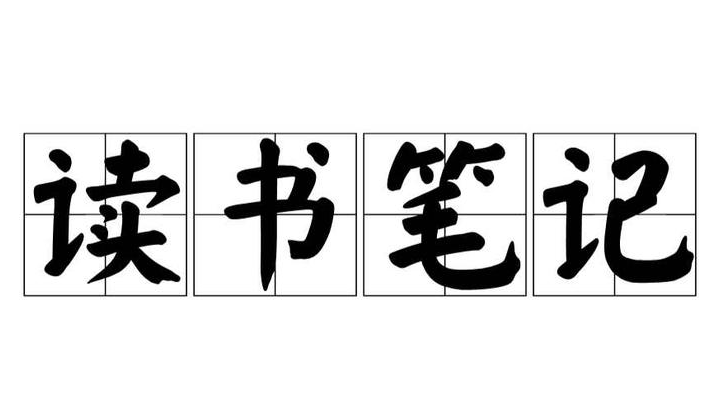SpringBoot使用Thymeleaf动态绑定下拉框、单选钮、复选框
项目中如果使用Thymeleaf模板引擎,需要经常的对下拉框、单选钮、复选框进行数据的动态绑定。下面将介绍如何使用Thymeleaf动态绑定下拉框、单选钮、复选框的数据。1、使用Thymeleaf动态绑定1.1Select标签的动态绑定(下拉框)<select name="departmentCode" class="b_select" ><option value="">
SpringBoot使用Thymeleaf模板引擎,系列文章:
项目中如果使用Thymeleaf模板引擎,需要经常的对下拉框、单选钮、复选框进行数据的动态绑定。下面将介绍如何使用Thymeleaf动态绑定下拉框、单选钮、复选框的数据。
1、使用Thymeleaf动态绑定
1.1 Select标签的动态绑定(下拉框)
<select name="departmentCode" class="b_select" >
<option value="">请选择</option>
<option th:each="item:${departmentList}"
th:value="${item.value}" th:text="${item.text}"
th:selected="${userInfo.departmentCode==item.value}">
</option>
</select>1.2 Radio标签的动态绑定(单选钮)
<input id="male" name="sex" type="radio" value="1" th:checked="${userInfo.sex==1}"/>
<label for="male">男</label>
<input id="female" name="sex" type="radio" value="2" th:checked="${userInfo.sex==2}"/>
<label for="female">女</label>
<input id="secrecy" name="sex" type="radio" value="3" th:checked="${userInfo.sex==3}"/>
<label for="secrecy">保密</label>1.3 Checkbox标签的动态绑定(复选框)
<th:block th:each="item:${roleList}">
<input th:id="'role_' + ${item.id}" name="roleArray" type="checkbox"
th:value="${item.value}" th:checked="${item.isChecked}">
<label th:for="'role_' + ${item.id}" th:text="${item.text}"></label>
</th:block>2、综合实例
【实例】获取用户信息,使用Thymeleaf绑定用户信息。
实例要求:
1、下拉框中动态绑定部门列表,并选中用户的部门。
2、单选钮动态绑定用户的性别。
3、复选框动态绑定角色列表,并选中用户拥有的角色。
4、获取并绑定用户信息。
执行结果:

(1)引入Thymeleaf依赖
首先创建SpringBoot项目,然后需要引入Thymeleaf依赖。直接在pom.xml文件中加入以下依赖即可。
<!-- 引入Thymeleaf模板引擎 -->
<dependency>
<groupId>org.springframework.boot</groupId>
<artifactId>spring-boot-starter-thymeleaf</artifactId>
</dependency>(2)配置视图解析器
在application.yml配置文件中,可以配置Thymeleaf模板解析器属性,如以下代码:
spring:
thymeleaf:
mode: HTML5
encoding: UTF-8
cache: false #使用Thymeleaf模板引擎,关闭缓存
servlet:
content-type: text/html(3)Entity实体层
创建entity目录(实体层),并创建 UserInfo.class 用户信息实体类。
package com.pjb.entity;
/**
* 用户信息实体类
* @author pan_junbiao
**/
public class UserInfo
{
//用户姓名
private String userName;
//博客地址
private String blogUrl;
//性别(1:男;2:女;3:保密)
private int sex;
//部门编号
private String departmentCode;
//角色数组
private String[] roleArray;
//博客信息
private String blogRemark;
//省略getter与setter方法...
}(4)Model模型层
创建model目录(模型层),并创建 OptionModel.class 选项模型类。
package com.pjb.model;
/**
* 选项模型类
* @author pan_junbiao
**/
public class OptionModel
{
public Object id; //编号
public String text; //文本
public Object value; //值
public boolean isChecked; //是否选中
public OptionModel(int id,String text,Object value)
{
this.id = id;
this.text = text;
this.value = value;
}
public OptionModel(int id,String text,Object value, boolean isChecked)
{
this.id = id;
this.text = text;
this.value = value;
this.isChecked = isChecked;
}
//省略getter与setter方法...
}(5)Controller控制器层
创建controller目录(控制器层),并创建 UserController.class 用户控制器类。
package com.pjb.controller;
import com.pjb.entity.UserInfo;
import com.pjb.model.OptionModel;
import org.springframework.stereotype.Controller;
import org.springframework.web.bind.annotation.RequestMapping;
import org.springframework.web.servlet.ModelAndView;
import java.util.ArrayList;
import java.util.List;
/**
* 用户控制器
* @author pan_junbiao
**/
@Controller
@RequestMapping("user")
public class UserController
{
/**
* 获取用户信息
*/
@RequestMapping("/getUserInfo")
public ModelAndView getUserInfo()
{
//获取部门列表
List<OptionModel> departmentList = new ArrayList<OptionModel>();
departmentList.add(new OptionModel(1, "研发部", "1001"));
departmentList.add(new OptionModel(2, "人事部", "1002"));
departmentList.add(new OptionModel(3, "财务部", "1003"));
//获取角色列表
List<OptionModel> roleList = new ArrayList<OptionModel>();
roleList.add(new OptionModel(1, "系统管理员", "2001"));
roleList.add(new OptionModel(2, "人事管理员", "2002"));
roleList.add(new OptionModel(3, "财务管理员", "2003"));
//用户信息
UserInfo userInfo = new UserInfo();
userInfo.setUserName("pan_junbiao的博客");
userInfo.setBlogUrl("https://blog.csdn.net/pan_junbiao");
userInfo.setSex(1);
userInfo.setDepartmentCode("1001");
String[] roleArray = new String[]{"2001","2003"};
userInfo.setRoleArray(roleArray);
userInfo.setBlogRemark("您好,欢迎访问 pan_junbiao的博客");
//关联角色选项
for(String roleItem : userInfo.getRoleArray())
{
for(OptionModel optionItem : roleList)
{
if(optionItem.getValue().equals(roleItem))
{
optionItem.setChecked(true);
break;
}
}
}
//返回结果
ModelAndView modelAndView = new ModelAndView();
modelAndView.addObject("departmentList",departmentList);
modelAndView.addObject("roleList",roleList);
modelAndView.addObject("userInfo",userInfo);
modelAndView.setViewName("user_info.html");
return modelAndView;
}
}(6)View表现层
在resources/templates目录下,创建 user_info.html 用户信息显示页面。
<!DOCTYPE html>
<html lang="en" xmlns:th="http://www.thymeleaf.org">
<head>
<meta charset="UTF-8">
<title>用户信息</title>
<meta name="author" content="pan_junbiao的博客">
<style>
table{
border-top: 1px solid #000000;
border-left: 1px solid #000000;
border-collapse: collapse; /*设置单元格的边框合并为1*/
}
th{
text-align: right;
}
th, td{
border-bottom: 1px solid #000000;
border-right: 1px solid #000000;
padding: 5px 10px;
}
select{
width: 100px;
padding: 3px;
}
</style>
</head>
<body>
<form action="" method="post" name="myForm">
<table align="center">
<caption>用户信息</caption>
<tr>
<th>用户姓名:</th>
<td th:text="${userInfo.userName}"></td>
</tr>
<tr>
<th>博客地址:</th>
<td th:text="${userInfo.blogUrl}"></td>
</tr>
<tr>
<th>性别:</th>
<td>
<input id="male" name="sex" type="radio" value="1" th:checked="${userInfo.sex==1}"/>
<label for="male">男</label>
<input id="female" name="sex" type="radio" value="2" th:checked="${userInfo.sex==2}"/>
<label for="female">女</label>
<input id="secrecy" name="sex" type="radio" value="3" th:checked="${userInfo.sex==3}"/>
<label for="secrecy">保密</label>
</td>
</tr>
<tr>
<th>部门:</th>
<td>
<select name="departmentCode" class="b_select" >
<option value="">请选择</option>
<option th:each="item:${departmentList}"
th:value="${item.value}" th:text="${item.text}"
th:selected="${userInfo.departmentCode==item.value}">
</option>
</select>
</td>
</tr>
<tr>
<th>角色:</th>
<td>
<th:block th:each="item:${roleList}">
<input th:id="'role_' + ${item.id}" name="roleArray" type="checkbox"
th:value="${item.value}" th:checked="${item.isChecked}">
<label th:for="'role_' + ${item.id}" th:text="${item.text}"></label>
</th:block>
</td>
</tr>
<tr>
<th>博客信息:</th>
<td th:text="${userInfo.blogRemark}"></td>
</tr>
<!-- 以下是提交、取消按钮 -->
<tr>
<td colspan="2" style="text-align: center; padding: 5px;">
<input class="b_button" type="submit" value="提交" />
<input class="b_button" type="reset" value="重置" />
</td>
</tr>
</table>
</form>
</body>
</html>更多推荐
 已为社区贡献3条内容
已为社区贡献3条内容









所有评论(0)